The big cat quietly scrunched up its body, coiling its muscles as a competitive swimmer would on the starting blocks. Her mass was being converted to momentum, she was kinetic energy, clutching claws, and sharp teeth wrapped in a priceless fur coat. At that moment I was unsure that Carlos even realized how close this wild animal was to us.
“Uh, Carlos?”
The jaguar unloaded its energy and leapt towards Carlos, covering at least twelve feet in a heartbeat. She clawed herself to the thin metal wall of her compound, eyes locked on her human target. Amy and I instinctively backed up and caught our breath. Carlos’s voice, earlier was commanding had now turned soft and appreciative as he offered “Chiqui” (chicky) a handful of raw chicken. Her threat vanished into a series of loud cat purrs and gentle tail wags.
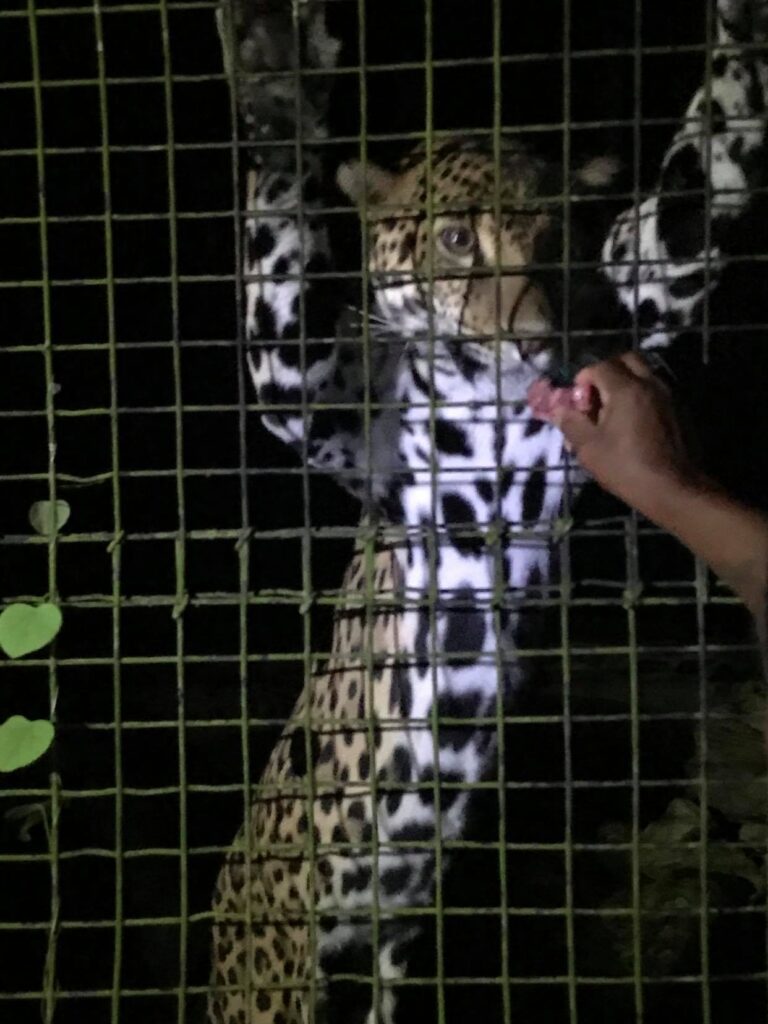
The Belize Zoo is, and isn’t near Belmopan, the capitol of Belize. It’s in La Democracia a town, village really, so small, it barely registers on any location-based software and Trip Advisor notes it with the Zoo and two restaurants. Belize is a country the size of Massachusetts with 400,000 citizens to the seven million of that US state. When driving through Belize’s mainland it’s easy to appreciate the vast remoteness of this beautiful country.

We arrived at the Tropical Education Center, an offshoot of the Belize Zoo, after driving the 29 miles from Belize City in a four wheel-drive rental car. Jurgen, the gentleman that helped us at Crystal Car Rental, gave us some very specific instructions, as did our hostess Diana in San Pedro.
“These people drive crazy so understand that. There’s no speeding tickets because of the speed bumps and they will destroy the car and put you in hospital if they don’t kill you.”
“Got it, Jurgen, thanks.”
“Mr. John I am quite serious. You both drive, understand? You behind the wheel and her looking down the road for speed bumps and obstacles. Don’t you bring this car back with any damage because you hit a speed bump, do you understand?”

Jurgen’s native German was very stern. As a young mechanic on a long haul freighter he first saw Belize when donkeys were the main mode of transportation. Today he waved off Belize City with a warning of keeping our distance.
“So much crime, such a terrible place. Oh! But the places you are going, Toledo, Placencia, such warm wonderful people. You two are very smart to be going to Toledo, the Mayans are such lovely people. They have so little and have so much.”
Jurgen was correct about all of the above. Thirty minutes later we rounded a gentle corner, under the speed limit and Amy hollered “Speed Bump!”
Holy Shit! Hard on the brakes, no one behind us, ABS engages, brake pedal chattering under my left foot, here it comes, off the brakes and BANG!
“Thanks, Jurgen.”
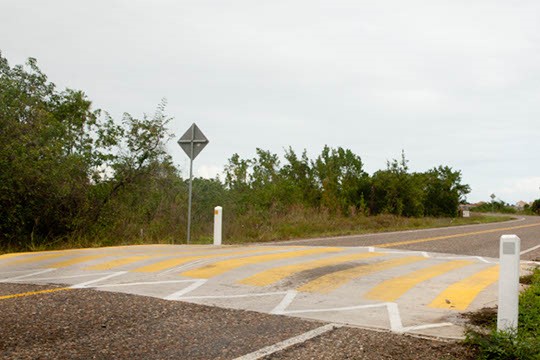
The warning signs for that one speed bump, imagine a speed bump built by a high school shop class specifically for the principal’s car, was placed about six inches prior to the bump. A standard yellow road sign with “Pedestrian Crossing” in 24 point font. The kids in the village cleverly wait at these to sell local goodies like fresh juice, chips, or flowers because they know everyone must come to a full stop to safely navigate these land mines. And Amy takes that cue to spot the next one.
“If you see a bunch of kids standing on the side of the highway, then drop the anchor.”
“Yes ma’am.”
As Belize City retreated in our mirror, we were both surprised to recognize the savannah of our own South Carolina coast. Anyone that’s driven through the edges of the lowcountry, Edisto, Hunting, or Fripp Island, would think they were back home. This part of Belize is flat, sandy, slightly damp, dotted with saw palmetto and scrub pine and patrolled by Turkey Vultures and Osprey.
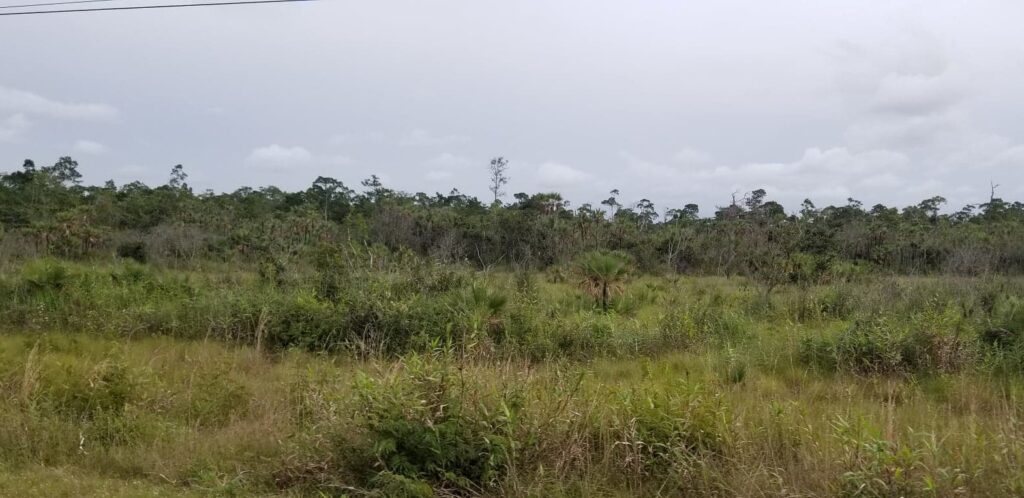
We soon found the Tropical Education Center. The TEC is akin to a summer educational camp or retreat, the kind that dot the western North Carolina mountains, except with crocodiles, and it lies about a half mile south of the Zoo. Juan, our host at TEC was incredibly knowledgeable and enthusiastic. He had a genuine love for the flora and fauna of his country, and he found much of the animals amusing, as if their quirks were meant for Belize. Dancing Red Capped Manakins, gargantuan nosed Tapirs, insane Leaf-Cutter Ants, chattering Coatimundi, goofy Pacas. As Juan offers up descriptions of the local inhabitants, he does so with a laugh and a smile. He guided us across the campus and then to our much nicer than anticipated room. As we unloaded our bags his favorite crocodile slowly swam up to us. Perhaps “swam” is too athletic of a word to describe how a crocodile moves through water. Drift is more appropriate.

“Too many visitors throw snacks to Pirate. So, he thinks visitors means food. Whenever we would look for him at night, he always closed one eye, made him look like he had one eye, so Pirate works.”
“We’ll hold onto our snacks.”
“Good idea.”
Even though the steps to our overnight accommodations looked challenging for a drifting croc, we still looked our screen door.

Our zoo tour was an evening affair. About half of the animals at the zoo are diurnal, half nocturnal. And an evening tour sounded like a great adventure. Carlos, our zookeeper guide and long-time member of the zoo’s team, was soft spoken and respectful and shared a wealth of knowledge on the zoo’s residents. Unlike most zoos, the Belize Zoo only keeps native animals. Fair enough because this country is home to a ridiculous amount of intriguing animals. Our first stop were the owls, one of which was a mere six inches tall. As we fed their assortment of birds, there was a distinct snuffle behind us.
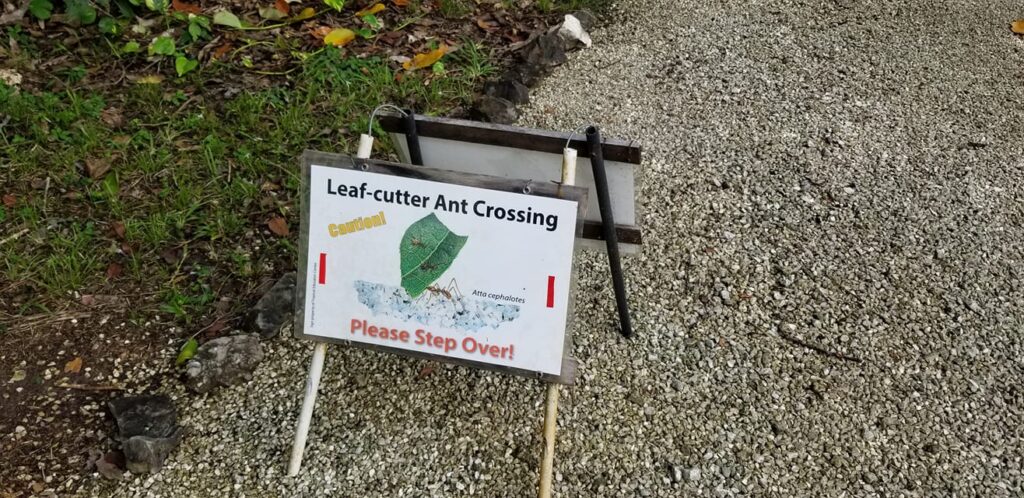
Tapirs (Tah Peer) are in the same family as horses and rhinoceroses and with their silly noses and hunch backs it’s easy to make that connection. “Indy” was a native of Independence, Belize. He’d been abandoned by his mom and a local found him and got him to the zoo. A familiar tale through our tour as all animals in this zoo are rescues. Indy is a fan of fresh carrots and Carlos gave me a couple to share. That nose. That long, Cyrano de Bergerac, prehensile nose and that silly smile, Indy is begging for his carrot and he makes me smile, makes Amy smile, and of course Carlos is smiling. How could you not? As he crunches through his carrots, he offers up his ears and back for a scratch and I see him as a member of the horse and rhinoceroses family. His bristly hair is as stiff as mine after a cut and he’s much friendlier than I’d have guessed. After a few minutes, after he’s gobbled his allotment of carrots, off he goes to the darkness.
Soon we were in the company of Belize’s big cats. Their Puma looked like any other mountain lion, majestic and glorious. Sadly, our east coast American Mountain Lions have been declared extinct since 2018. It’s possible there’s a few roaming around the Appalachians, but unlikely. As long as there’s biodiversity, there’s a food source for the big cats and unlikely they’ll bother humans. This Belizian lion kept his distance from us.
Carlos turned and smiled as if we were about to get on a roller coaster.
“This way to the jaguar.”
Chiqui is short for Chiquibul, a national park in Belize’s Cayo District. A half drowned, baby Chiqui was rescued from a stream in the park by rangers and immediately shipped to the zoo. Chiqui is now friendly with humans and naturally a poor candidate for reintroduction to the wild. Just as well as she and Indy are the stars of this zoo and receive the lion’s share of their donations. Here she has a very large compound (she is caged at night), Carlos, and a supply of fresh chicken.
I know we’ve seen a Jaguar in a zoo before, perhaps in New Orleans or San Diego. But I do not remember them being so incredibly beautiful as Chiqui. Her fur, her eyes, he teeth are all immaculate. She radiates love and care and even though she is a powerful cat that, according to Carlos, doesn’t know her strength, I want to put my hands through her cage and scratch every hair on her body. Carlos obviously has had visitors ask if they could touch her and he offers up a warning to please not put our hands near the cage.
“She’s no Tapir.”
Well, he’s got me there.

The zoo has all of Belize’s wild cats and we met the Ocelot, much bigger than we guessed, their Margay which was much smaller than we realized, and the Jaguarundi which was more shy than we realized because he wouldn’t come out. All of the cats were incredibly beautiful, and we were fortunate to get so close to them in their home country.
Carlos motioned us towards the next area and cautions us to mind the ants. Leaf cutter Ants are so named because they cut leaves and carry the pieces back to their massive mounds. They do not eat the leaves, they chew them, pile them up and their saliva creates a specific fungus. And that’s what they eat. Yeah, it sounds gross, but it’s genius because few animals can digest grass. How these ants came to figure this out is one of life’s amazing mysteries. And we asked Carlos what Belize would look like without leaf cutters and his answer, “probably much greener” points out that all these animals serve a purpose in their homes. Humans, at least most of us, learned only recently that the collapse of one species can lead to the collapse of many others. Kill the coyotes in west Texas and you could be overrun with jack rabbits or prairie dogs. Introducing wolves back into Yellowstone was met harshly by many and the incredible results, now 25 years later, have been widely praised by many. Bats may creep you out but imagine how awful the mosquitoes would be without them.

Before departing we met the zoo’s coatimundi, its kinkajous and their four eyed possums. Other than the miniscule Pygmy Owl, the tribe of Kinkajou may have been the cutest. Members of the raccoon family, these long tailed furry friends scampered up to us looking for a snack, which we had. They are tree dwellers and prefer the rainforest and have no problems raiding a honey bee hive for honey. Hence their nickname of Honey Bear, although they’re not bears.
As Carlos walked us back to our cars and a big tip, I really wanted to go back to Chiqui’s area.
“Hey can we go back and see Chiqui?”
“You can’t put your hands in her cage. And we have a curfew.”
Damn. He was correct. Belize has an 8:00 pm curfew and these folks had a drive in front of them. We headed back to our lodge at the TEC, bade good night to Pirate, and locked our cabin door.

~ John
Wake Me Up Granola
2 cups Old-Fashioned Oats
1/2 cup sesame seeds raw, rinsed, drained
1/3 cup brewed coffee
1/4 cup maple syrup
1/4 cup brown sugar
1 tablespoon vanilla
4 cacao seeds, ground, or 1/2 teaspoon cocoa powder
1/3 cup coconut
2 tablespoons coconut oil
3/4 cup dried fruit of your choice (I used cherries)
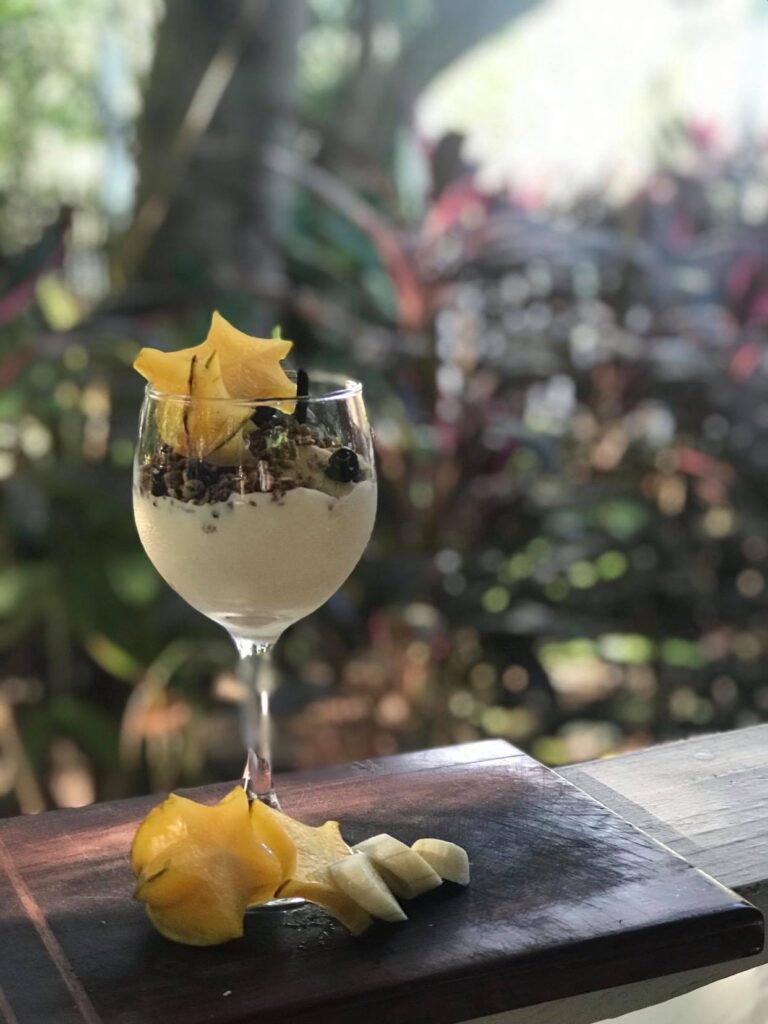
Preheat oven to 300°.
Line a baking pan with aluminum foil or parchment paper. Brush it with the tablespoon of the coconut oil.
Dissolve sugar in brewed coffee over low heat. Turn off the heat and add the vanilla, cacao nibs and remaining coconut oil to the liquids.
Place the oats, sesame seeds, and dried fruit in a large mixing bowl. Pour the liquid over the oats mix and toss to coat thoroughly.
Spread on the baking pan and place in oven. Set the timer for 10 minutes and turn the mixture with a spatula or spoon every 10 minutes. Could take up to 40 minutes to one hour to bake.
Cool before transferring to an airtight container for storage.
Yield: about 2 1/2 cups
©AmyMalikJan2021
You’re reading the year-long adventures of John & Amy Malik in Belize, Central America. We’re professional chefs, restaurant owners, food & travel writers, adventurers, (former) tent campers, and hikers. We prefer authentic street food over a steakhouse, craft beer over traditional lager, a glass of Spanish Garnacha over California Merlot. Should you feel so inclined, please share this essay with someone you’d take on a rustic adventure, and sign up for our next dispatch from Belize. Just click here.


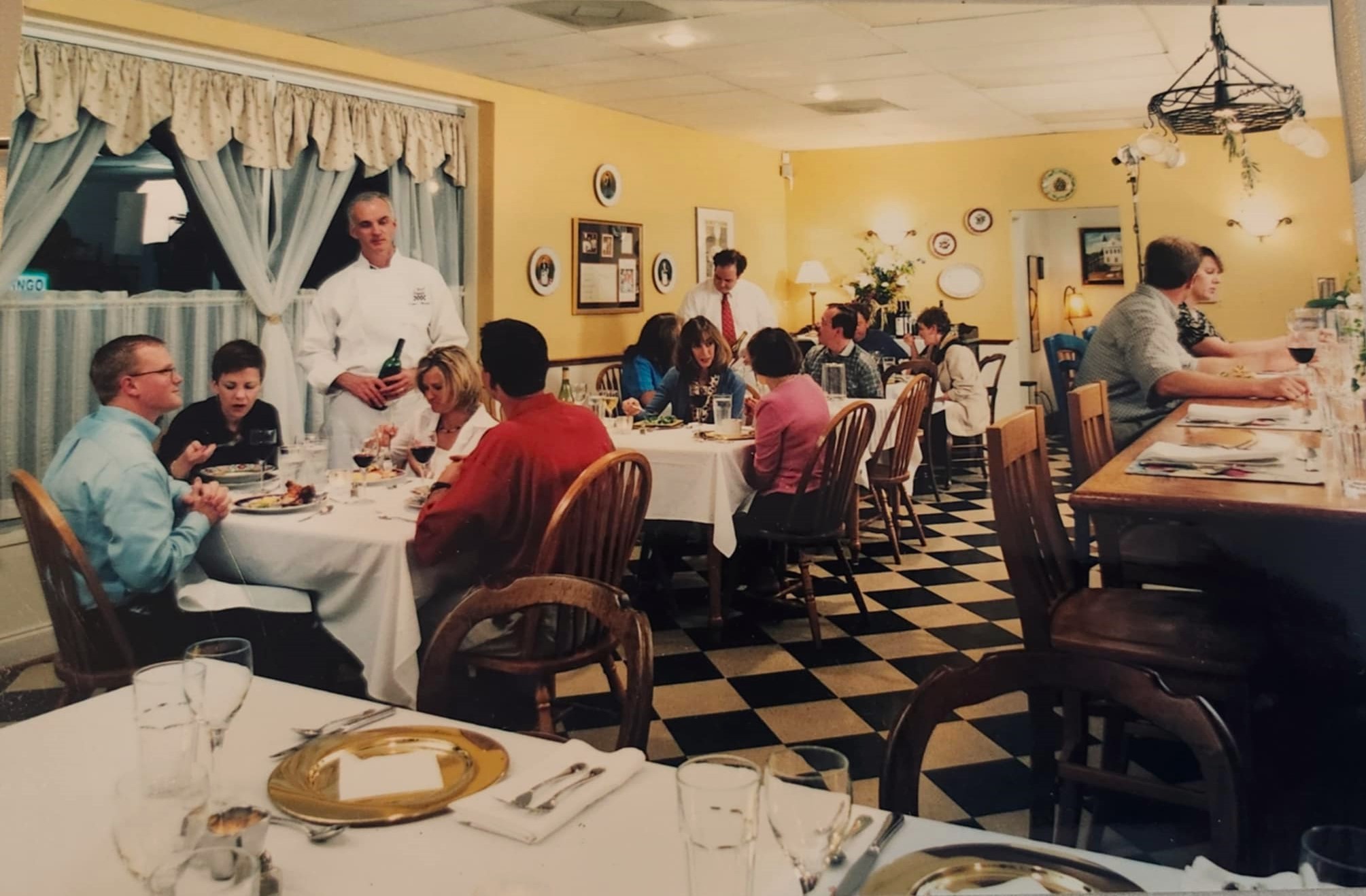

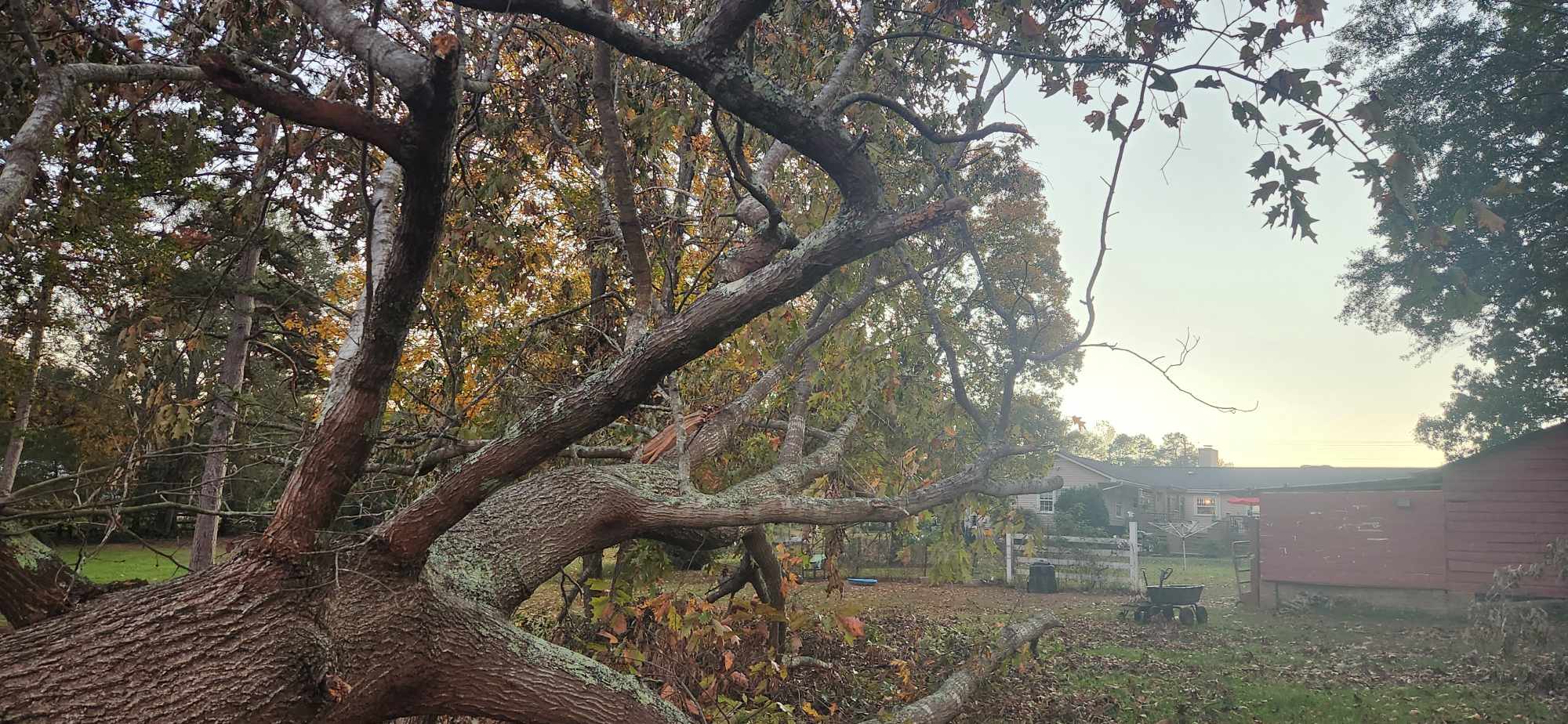
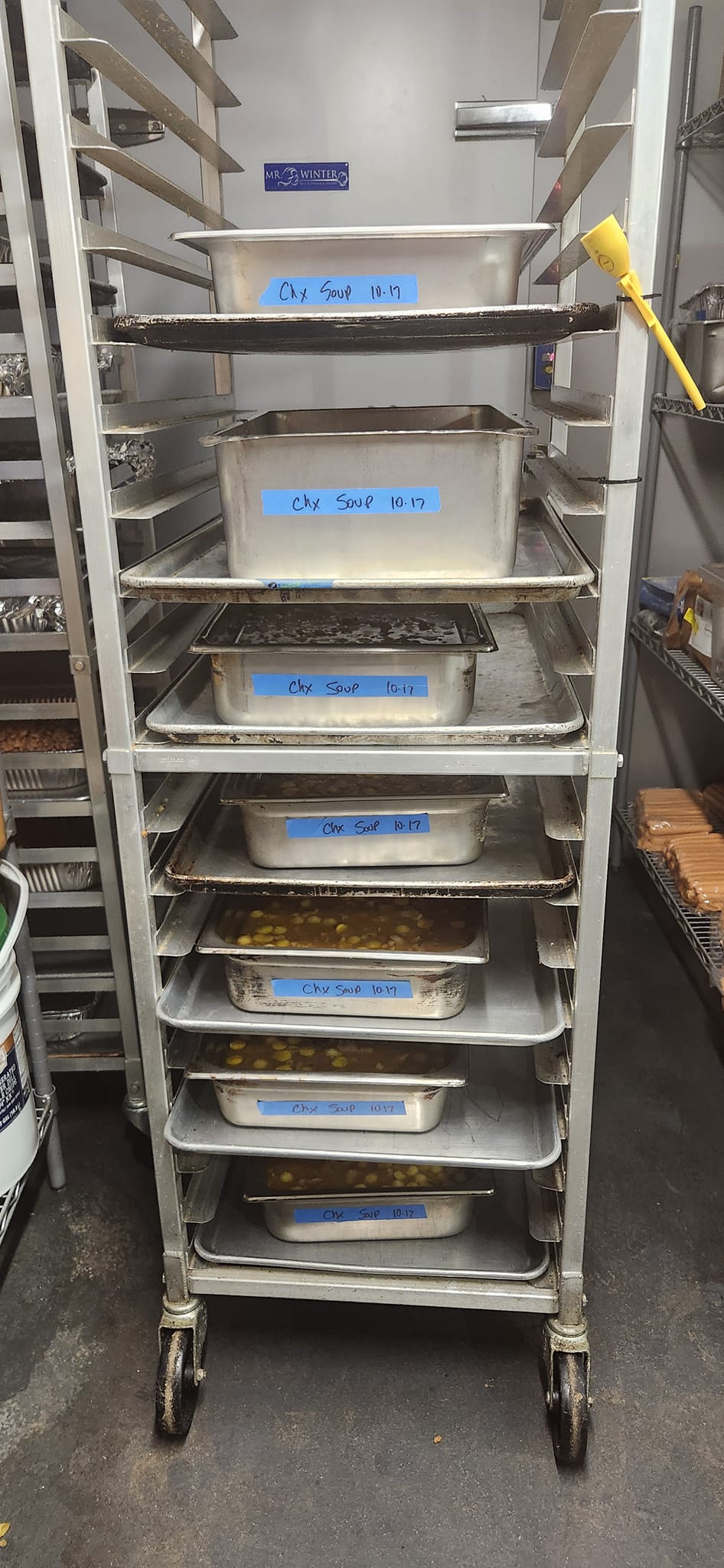
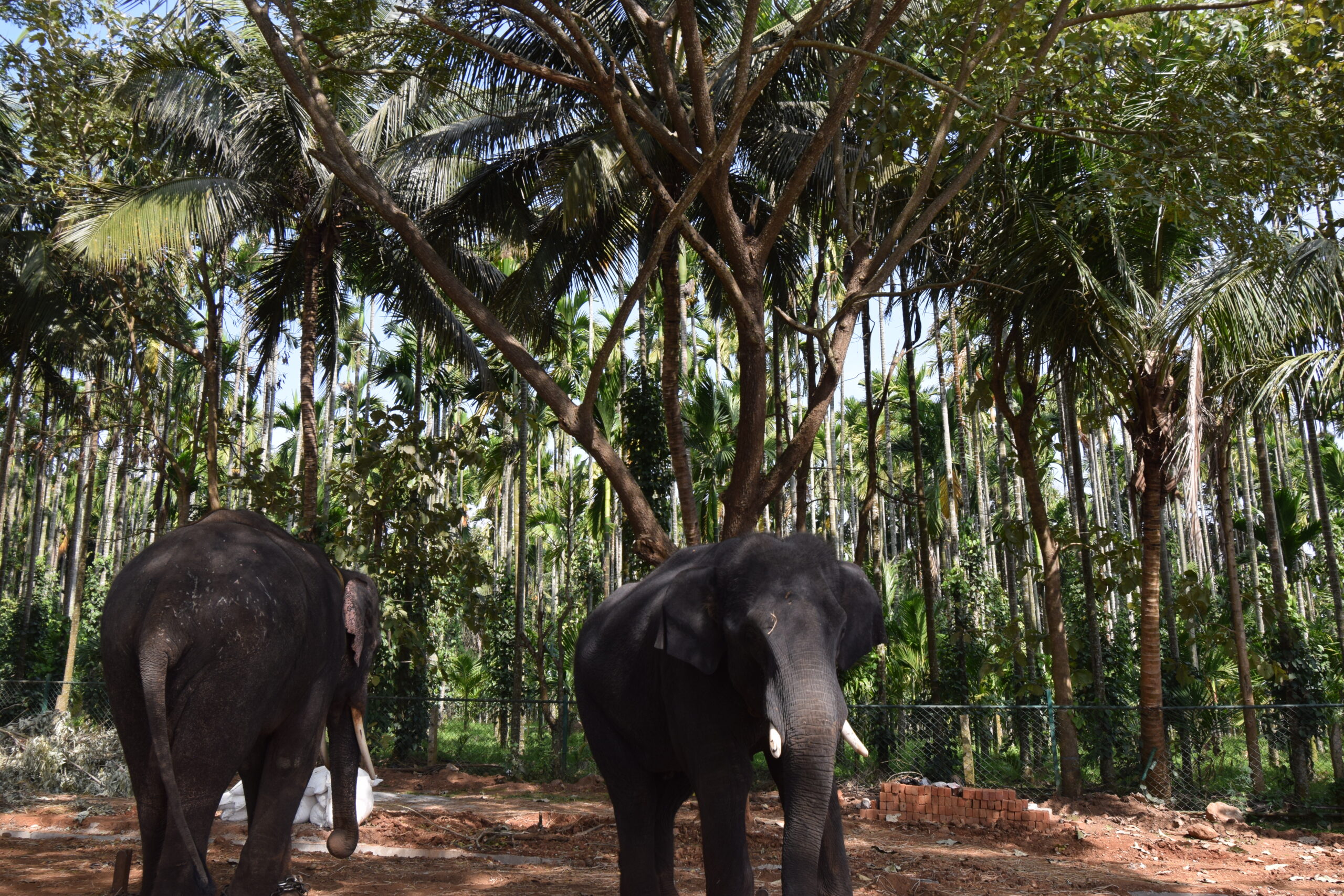
2 Responses
Loved joining you (virtually) on your trip to the zoo! Thanks so much for sharing your adventure!